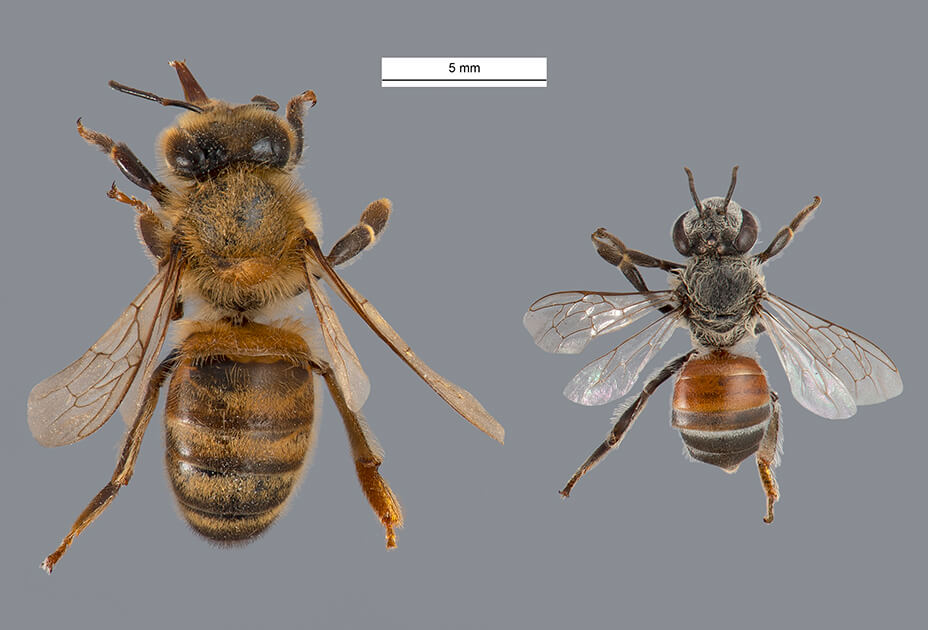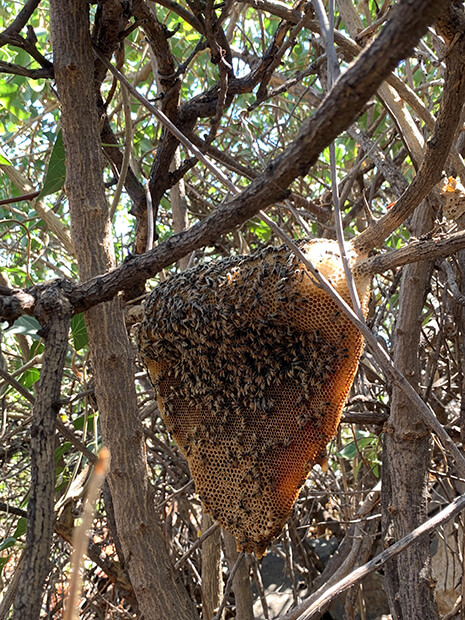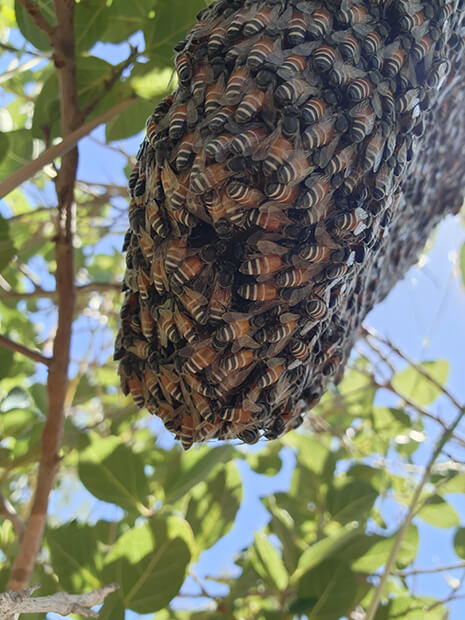Red dwarf honey bee (Apis florea) is exotic to Australia and a threat to our bee and pollination dependent industries, and our environment. Red dwarf honey bees are not a threat to human health.
Detection in Australia
Red dwarf honey bee was detected in the industrial area on the Burrup Peninsula, Western Australia in March 2023. It’s unknown how and when the pest entered Australia. The pest bee is contained within the industrial area and surrounds within the Burrup Peninsula.
Ethanol washes of the pest bees resulted in the detection of brood mites (Euvarroa sinhai), a different mite than the destructive varroa mite (Varroa destructor) that impacts European honey bees (Apis mellifera).
Response program
The WA Department of Primary Industries and Regional Development (DPIRD) leads the response to this detection. The aim is to eradicate the red dwarf honey bee and brood mite from the Burrup Peninsula through detection and euthanasia. The goal is to minimise adverse effects on the Australian honey bee industry, plant industries that rely on pollination, local communities and the environment.
See more
How we coordinate a response to an outbreak.
Your obligations
Report sightings
If you suspect an exotic pest or disease outbreak, report it. Even if you’re not sure.
Call the Exotic Plant Pest Hotline on 1800 084 881. This will put you in touch with your state or territory’s biosecurity agency.
For signs of exotic bees and pests in imported goods, sea containers or parcels, call See. Secure. Report on 1800 798 636 or use our online form.
Follow the rules
Keep exotic dangerous pests and diseases out of Australia. Never ignore our strict biosecurity rules.
Import shipments may need to be treated and certified. Before you import, check our Biosecurity Import Conditions system (BICON).
Movement restrictions
A Quarantine Area surrounding the Burrup Peninsula is in place. This helps contain the spread of the pest bee. It also allows for surveillance activities to be undertaken.
Beekeepers with hives, equipment or those who have collected swarms on the peninsula are not permitted to move them outside the Quarantine Area to prevent the pest from spreading.
Workers, residents, businesses and visitors to the Quarantine Area are required to report observations of unusual bees to the Exotic Plant Pest Hotline on 1800 084 881 or through MyPestGuideReporter®.
About the pest
The red dwarf honey bee is one of the smallest honey bees and has distinctive red/brown and white and black bands on the abdomen. A foraging worker bee body length is 7–10 mm.
Red dwarf honey bees construct a small single wax comb nest - less than 250 mm diameter - in protected but open locations. They often choose tree cavities, crevices, or human-made structures such as buildings or rock formations. Wax honeycomb may contain live bees, parasites and diseases. Dead bees, or bees attracted to lights or foraging for food or water may indicate a nearby colony.
These social bees live in colonies that vary in size. They exhibit swarm behaviour and are known to abandon their colony and relocate to a new site if conditions become unfavourable.
The bee is native to South Asia, as well as parts of Southeast Asia, the Middle East and Africa. Red dwarf honeybees, and parasitic mites which they can carry such as Euvarroa and Tropilaelaps species, are not established in Australia.
The red dwarf honey bee can compete for resources with European honey bee and other bee species. It has been reported to rob European honey bee hives.
In addition to carrying parasitic mites, red dwarf honey bee may also be a host and reservoir for diseases that affect European honey bee.


